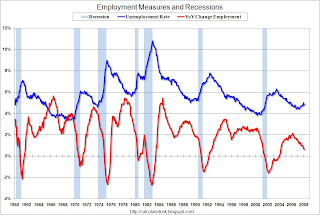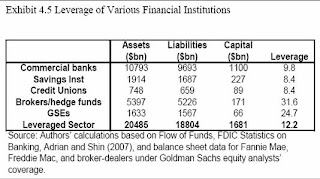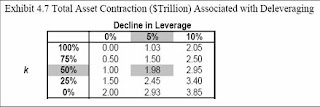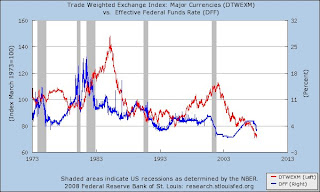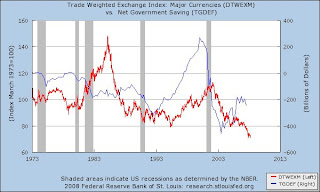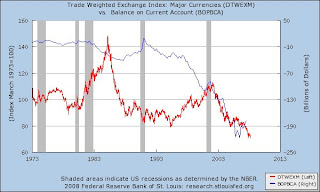Something about CALPERS
An interesting inside look at how Calpers operates (source: wsj)
California’s Soeveign Wealth Fund
Deputy Treasury Secretary Robert Kimmitt recently spelled out a few policy principles for sovereign wealth funds (SWFs), the most important of which was this: “Invest commercially, not politically.” Mr. Kimmitt’s concern is that “governments could conceivably employ large pools of capital in noncommercially driven ways that are politically sensitive.”
Anyone interested in evidence of such behavior needn’t look beyond America’s borders. If California were a national economy, it would be the eighth largest in the world. And its Public Employees’ Retirement System, Calpers, with $259 billion in assets, would rank fifth among the world’s SWFs. Combine it with the $169 billion California State Teachers’ Retirement System (Calstrs), and California runs the second largest SWF in the world, just behind the United Arab Emirates.
Calpers is a political entity in every sense of the word. Its board is comprised of four members of the state political hierarchy, two appointees of the governor, one appointee of the legislature and six elected members — all six of whom have long ties to organized labor, including the board president, Rob Feckner, who is also executive vice president of the California Labor Federation. Calpers’s investment policies are politically driven, often dictated by the legislature, and even involve foreign policy goals.
Gov. Arnold Schwarzenegger tried to tame the behemoth in 2005 by forcing public employees to join a defined-contribution pension plan. But he was driven into retreat by strong union opposition, and last October he joined the effort to politicize investments by signing legislation to force Calpers and Calstrs to divest about $3.4 billion in stock of companies that do business in Iran.
A Calpers spokesman estimated the likely divestment transaction costs to fundholders to be about $17.8 million. In total, investment politics have cost fundholders vastly more in recent years. Restrictions on the investments Calpers can make in developing countries have cost the fund approximately $410 million, according to a staff memo issued last year. That’s equal to 2.6 percentage points in returns. The staff has long bristled at political interference, but their concerns are perhaps better viewed as economic interference with the state’s foreign policy agenda.
Developing-country investment restrictions based on political factors and labor practices began in earnest in 2002 under the direction of then-state treasurer and Calpers board member Phil Angelides. These quickly put 14 of 27 such countries examined by Calpers off limits. When the Philippines was proposed for exclusion in 2004, its stock market and currency plunged. Spurred into action by the Philippine ambassador and heeding a call from Sacramento priests, six busloads of Filipino-Americans besieged a Calpers investment meeting, forcing officials into an embarrassing volte face. Mr. Angelides nonetheless called for Calpers to increase “positive pressure” on foreign governments. “It would be a mistake to walk away from an activist policy,” he said.
When looking for the results of “positive pressure” exerted by Calpers’s board, it is best to look close to home. In 2006, the Los Angeles Times revealed that individuals associated with three U.S. venture-capital firms donated money to the Democratic gubernatorial campaign of Steve Westly, who as state controller and Calpers board member had helped the firms land multi-million-dollar investments from the fund. A 2002 New York Times piece raised similar concerns about Calpers investment beneficiaries who donated tens of thousands of dollars to the election campaigns of Mr. Angelides and former Gov. Gray Davis.
The fund touts “good corporate governance.” But the actual investments it trumpets typically relate to labor and environmental practices, not shareholder concerns.
In February, Calpers’s chief investment officer, Russell Read, highlighted the California Initiative Program, which directs capital to “companies that employ workers who live in disadvantaged areas,” and a new $2.5 billion investment program for environmentally friendly forest projects. Mr. Read justified the program by stating that “investing in forests is an important move to guard against inflation.” At least someone is holding the Federal Reserve to account.
California’s newest political target is, interestingly, sovereign wealth funds. A bill pending in the state assembly would restrict Calpers and Calstrs from investing in private-equity firms, or in any funds managed by such firms, if they are owned in whole or in part by SWFs. The assembly is clearly concerned that other governments will use their investments to pursue political agendas. Now, where could they have gotten that idea?
Feldstein’s plan: no government bailout
Martin Feldstein outlined his rescure plan on the housing sector. Unlike recent cryout for government bailout or forced alteration of mortagage contract, he proposed, in my view, the first potentially workable more market-based solution. The idea is to offer incentives to homeowners not to walk away and raise the opportunity cost of mortgage default.
Here’s one way that such a program might work: The federal government would lend each participant 20% of that individual’s current mortgage, with a 15-year payback period and an adjustable interest rate based on what the government pays on two-year Treasury debt (now just 1.6%). The loan proceeds would immediately reduce the borrower’s primary mortgage, cutting interest and principal payments by 20%. Participation in the program would be voluntary and participants could prepay the government loan at any time.
Decoupling, something new


Recession is done deal
Nonfarm payroll employment edged down in February (-63,000), and the unemployment rate was essentially unchanged at 4.8 percent, the Bureau of Labor Statistics of the U.S. Department of Labor reported today. Employment fell in manufacturing, construction, and retail trade. Job growth continued in health care and in food services.
(click to enlarge, courtesy CR)
What matters most for US Dollar?
Here are three graphs I plot from St. Louis Fed on relationship between Dollar (trade weighted against major currencies) and Fed funds rate, budget deficit and current account deficit. Red is dollar exchange rate. Click to enlarge.



